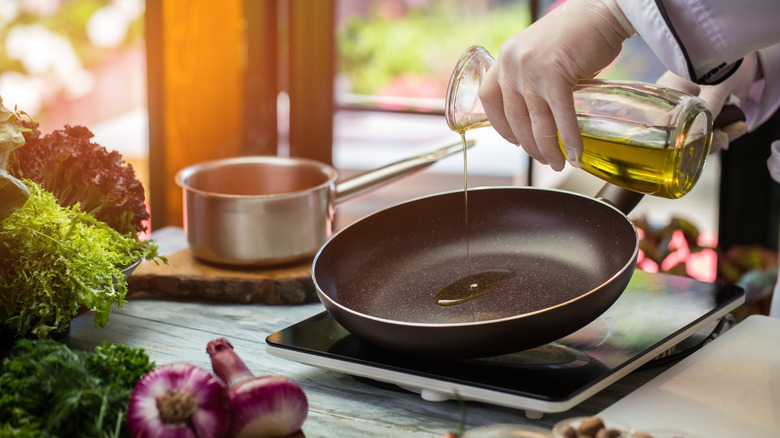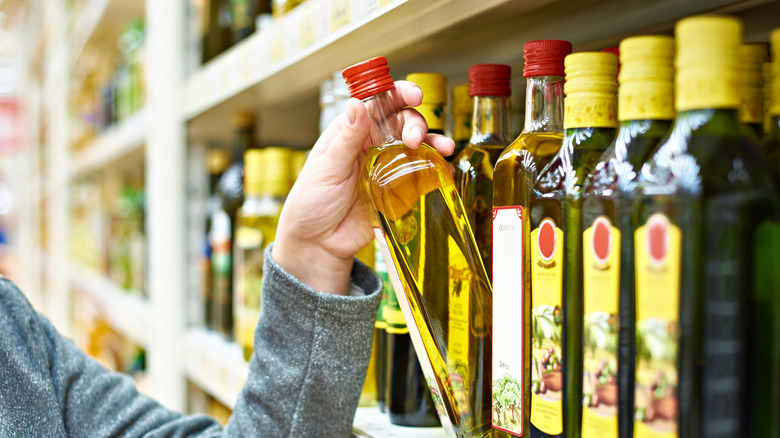Why You Shouldn't Always Buy Extra-Virgin Olive Oil
Olive oil is a staple in kitchens worldwide, from the Mediterranean to the Midwest. Extra-virgin olive oil, in particular, is often held up as the gold standard of cooking oils, prized for its rich flavor, superior quality, and numerous health benefits. However, being labeled extra-virgin doesn't always guarantee superiority. While there are times when extra-virgin olive oil is the best choice, other situations may call for another olive oil. To be a savvy shopper and a skilled cook, it's important to know the differences, starting with how different olive oils are made.
All olive oils originate from the fruit of olive trees, but the journey from tree to grocery shelf is what defines their classification, qualities, and culinary applications. Extra-virgin olive oil is produced by carefully crushing and pressing olives to extract their oil while minimizing the use of heat. This method preserves more olive flavor and beneficial plant compounds called polyphenols. To earn the extra-virgin label, strict standards must be met, including impeccable flavor, minimal defects, and very low levels of a free fatty acid called oleic acid, which indicates freshness of the olives during pressing.
In contrast, pure olive oil (also known as "regular" olive oil) is produced by using heat and/or chemicals instead of pressure alone. This results in a more refined oil with a milder flavor, fewer polyphenols, and a lighter color. These differences, however, aren't always negative and can suit different cooking needs.
In some dishes, regular olive oil can be a better choice
If you're using oil for cooking at low temperatures, or if you want it to have a bit more flavor, reach for the extra-virgin olive oil. Surprisingly, extra-virgin olive oil has a smoke point that's relatively high — 355 degrees Fahrenheit for long cooking times and up to 475 degrees if your cooking time is quick — meaning it won't break down into a smoky mess at the mere sight of a flame. This makes it a solid option for quick sauteés, frying, and roasting. Due to its robust olive flavor, extra-virgin olive oil is also great in uncooked preparations such as a dip for bread or a balanced salad dressing.
For cooking at higher temperatures, such as searing meat or vegetables, regular olive oil is a more suitable choice. Its milder flavor and lighter color also make it ideal for dishes where subtlety is key, allowing other ingredients to shine. This is especially true for baked goods, where you can seamlessly replace other neutral oils like canola or vegetable oil without altering the taste significantly.
Extra-virgin doesn't always mean better quality or value
Celebrity chefs like Ina Garten recommend using a good olive oil in cooking, which to her means "the best oil that your budget allows," but even this definition can be murky. If you're still feeling confused when you reach the grocery store aisle, there are a couple of things to keep in mind — your quality expectations and budget.
When it comes to the quality of both regular and extra-virgin olive oils, check for third-party testing, like the North American Olive Oil Association Quality Seal. This is because although they are held to a higher labeling standard, even extra-virgin olive oils can be fakes. If budget is on your mind, regular olive oil is often more affordable, whereas extra-virgin olive oil (especially the higher-quality ones) can be pricier. For most home cooks, having both extra-virgin and regular olive oil in the kitchen is beneficial. Extra-virgin is ideal for flavorful dressings, bread dipping, and cooking at low temperatures, whereas regular olive oil offers a budget-friendly, milder alternative suitable for high-heat cooking. Ultimately, either choice is a sensible addition to your culinary arsenal.


